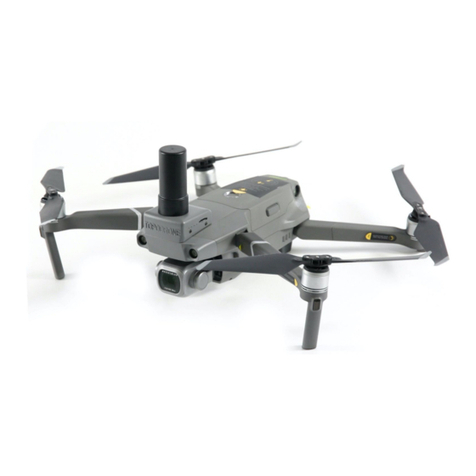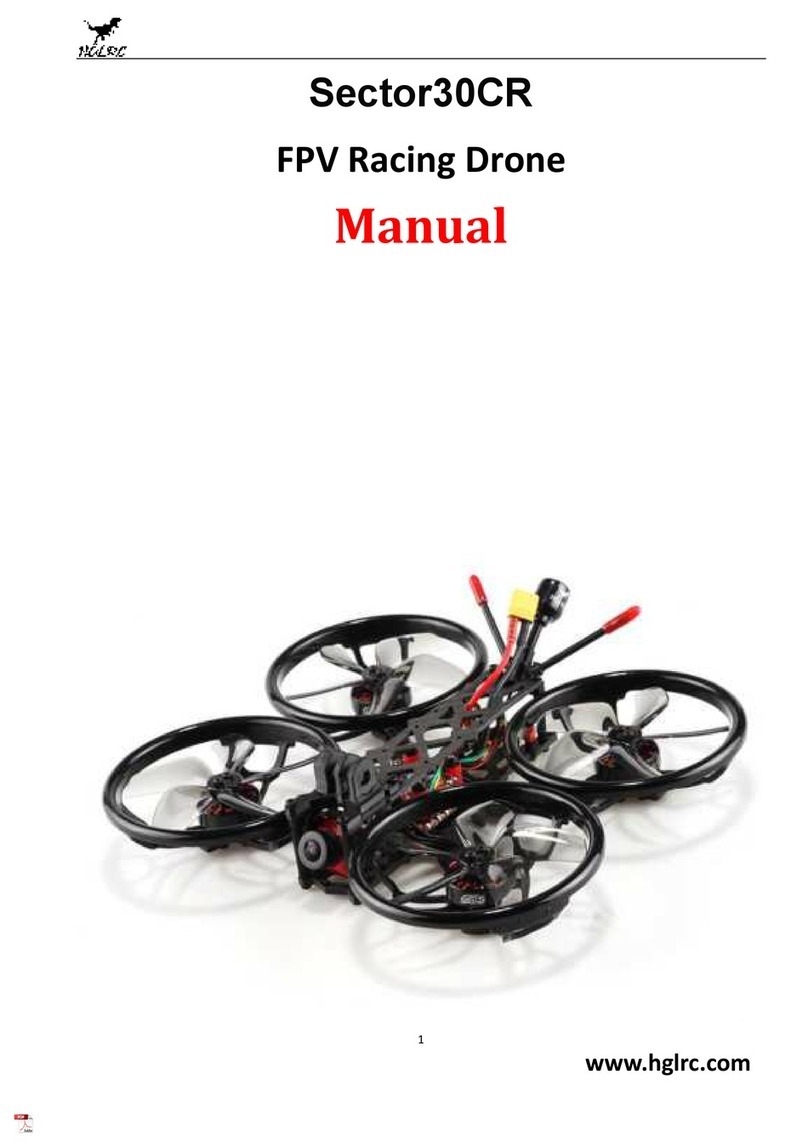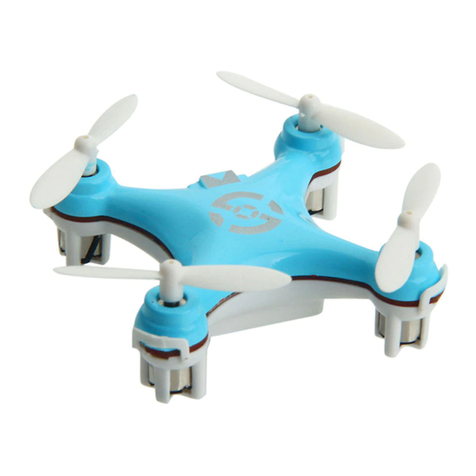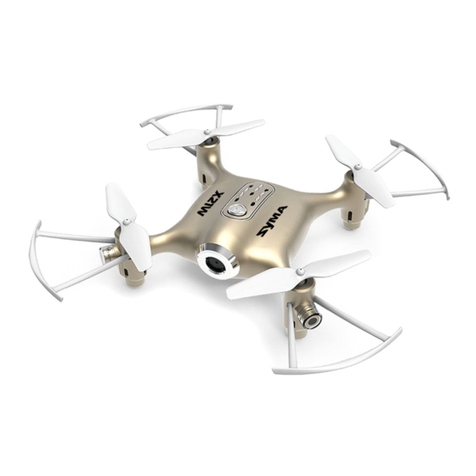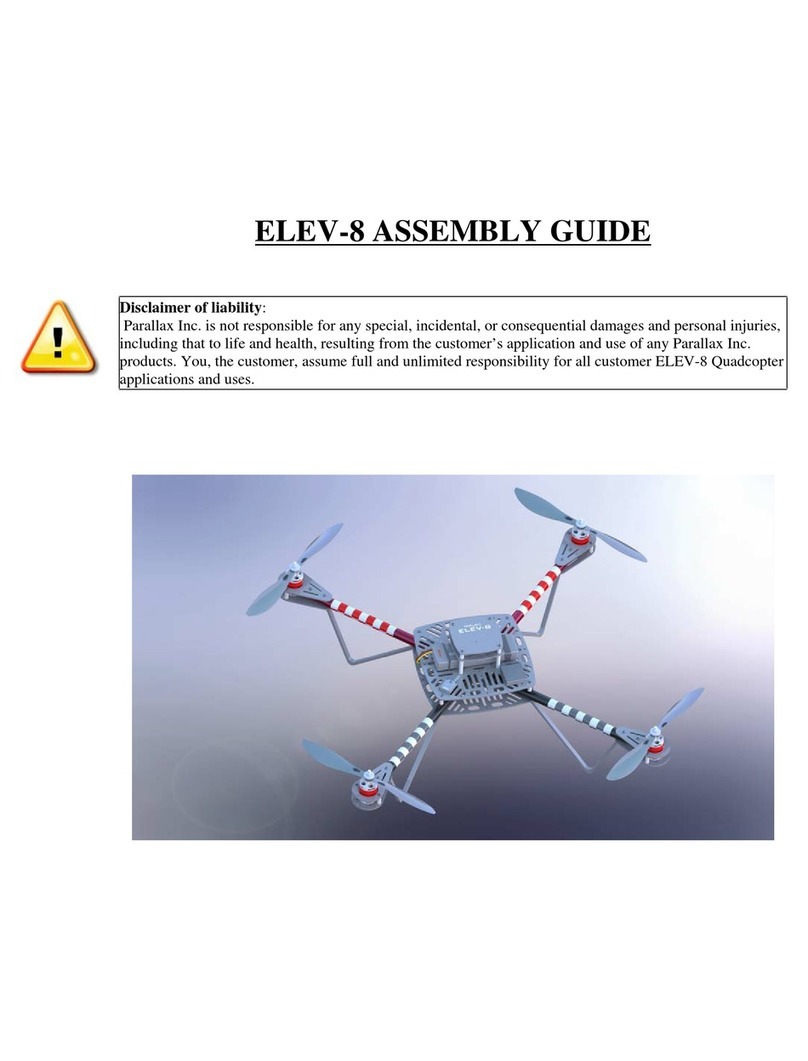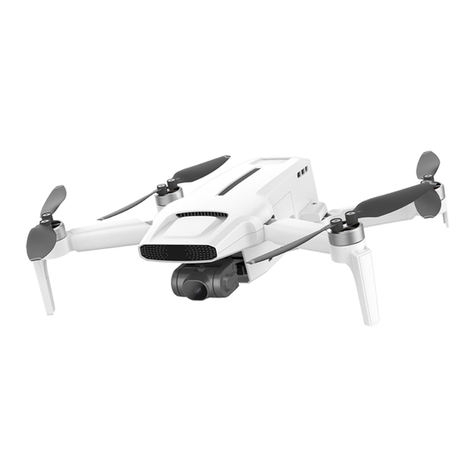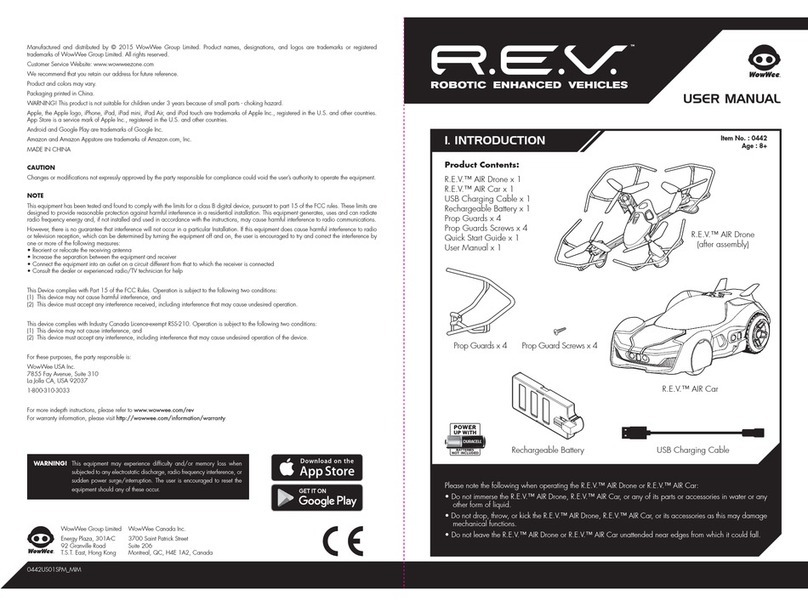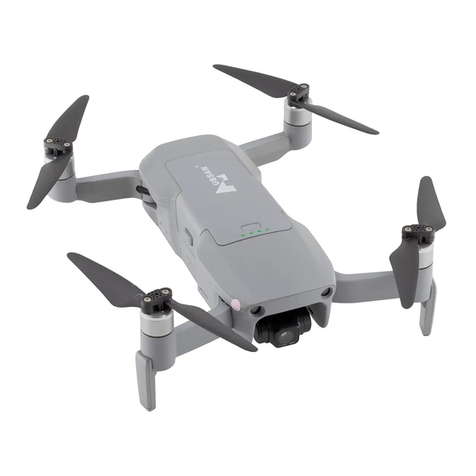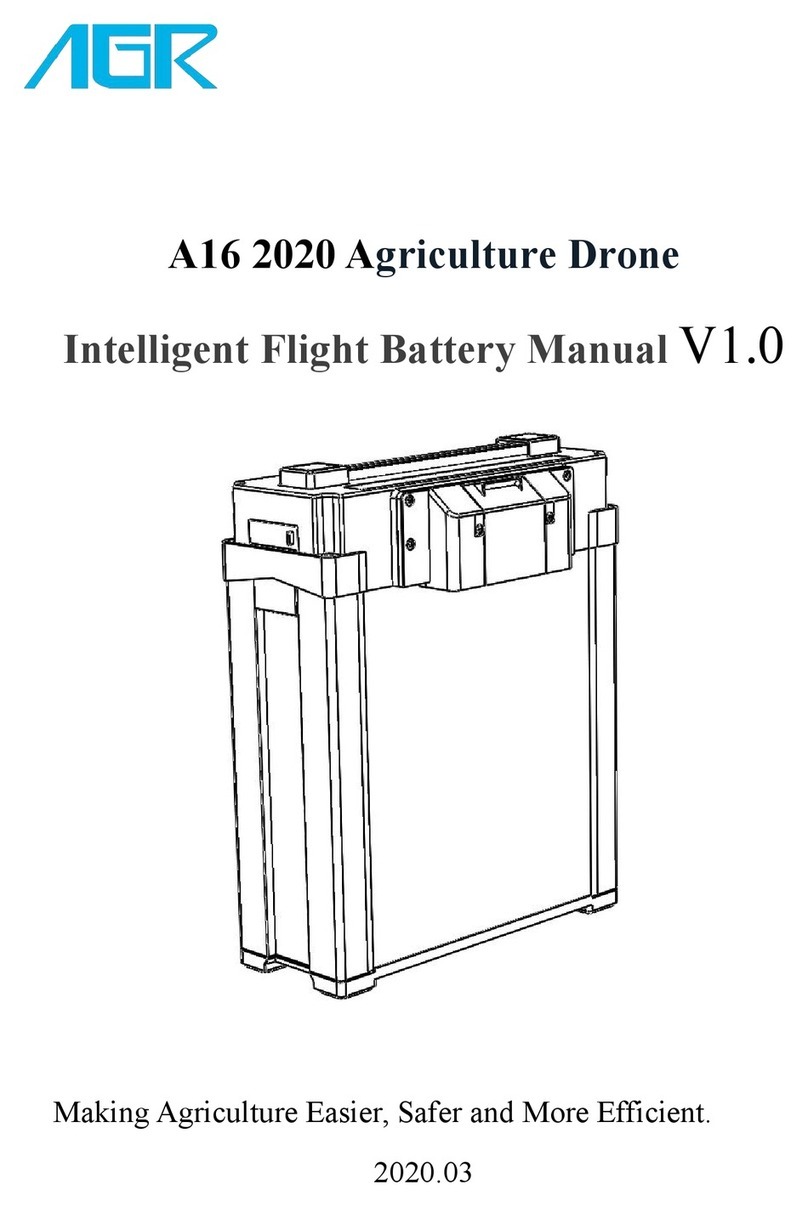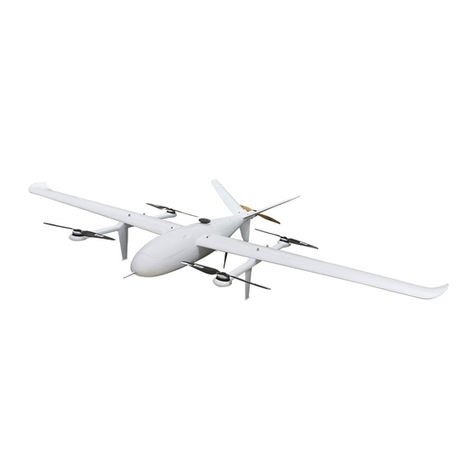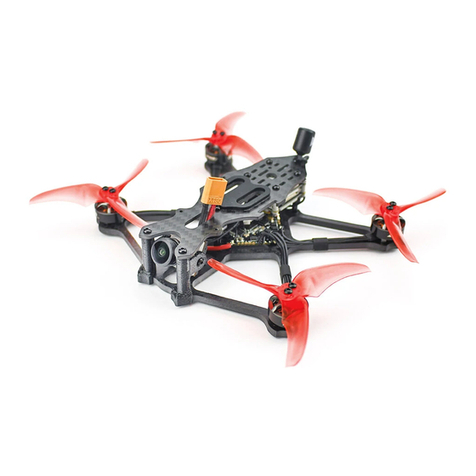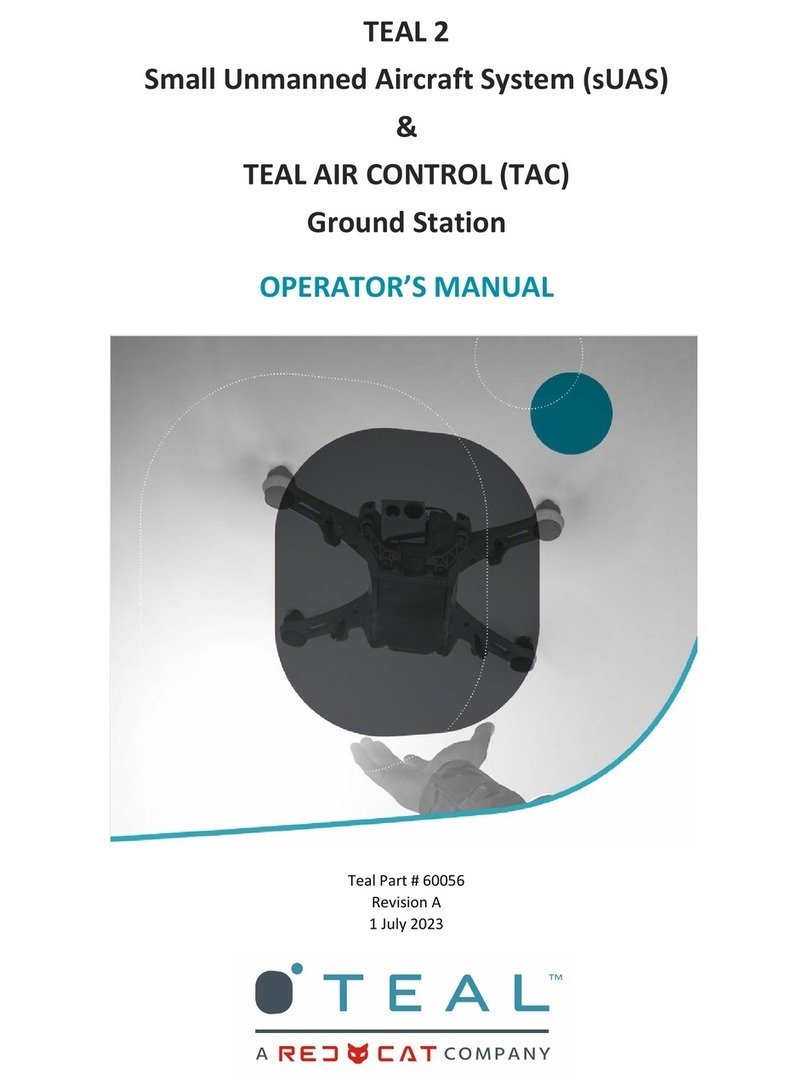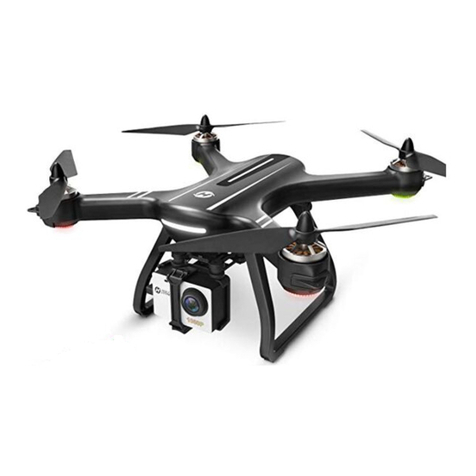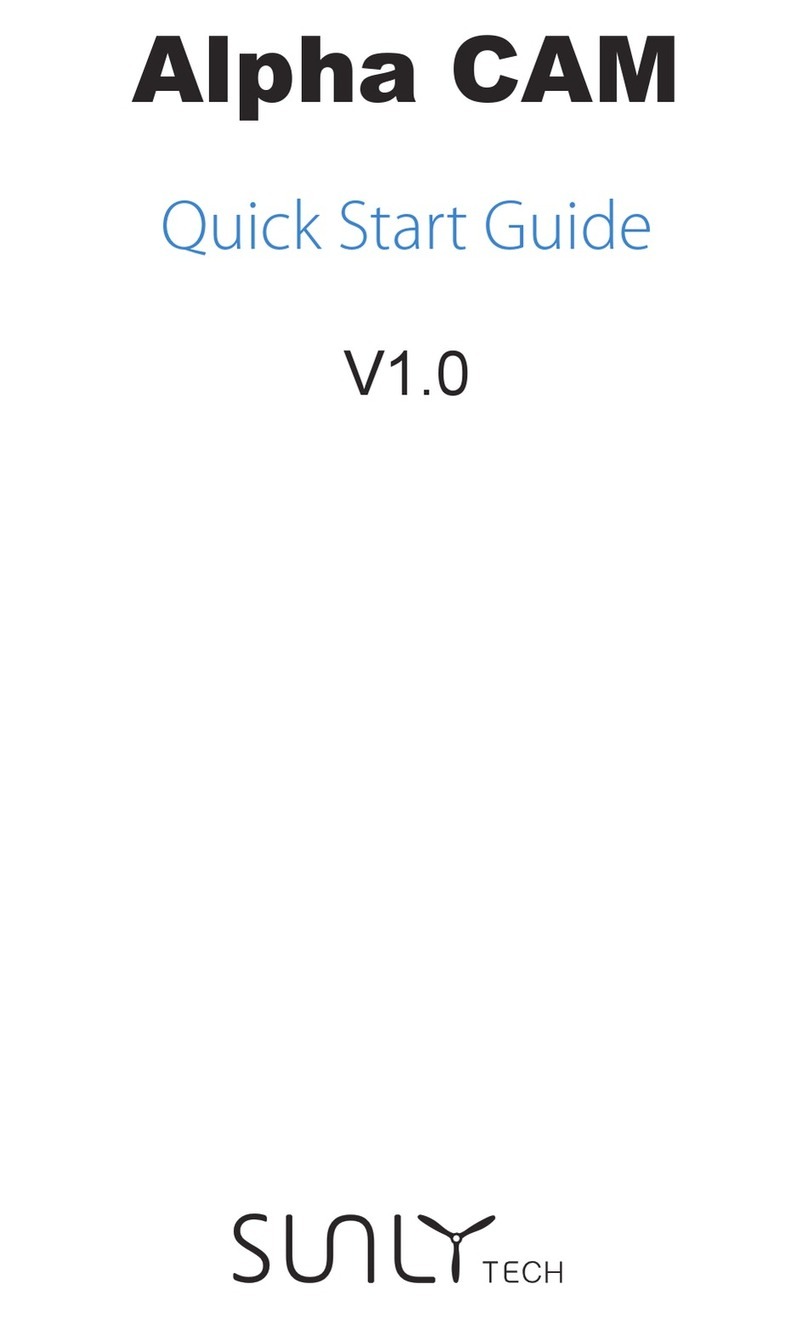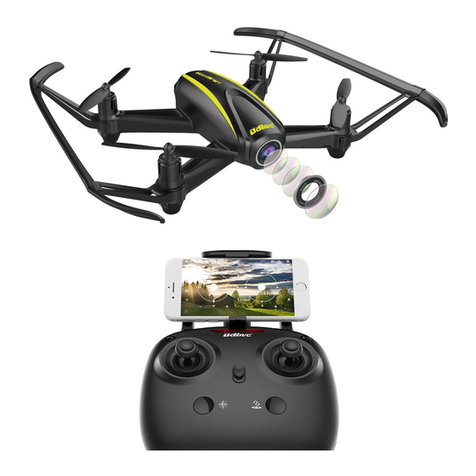Topodrone DJI Matrice 200 V2 L1/L2 RTK/PPK User manual

Topodrone SA
CHE-354.723.874 TVA
1820, Rue de la Gare 13, Montreux, Switzerland
+41 797 910 713
www.topodrone.org
TOPODRONE DJI M200 L1/L2 PPK
USER MANUAL

Topodrone SA
CHE-354.723.874 TVA
Rue du Centre 39, 1637 Charmey, Switzerland
+41 797 910 713
www.topodrone.org
Page 1 from 42
TABLE OF CONTENTS
No
Description
pages
1.
Drone preparation
2
1.1
First steps before work
2
1.2
Compass calibration
3
1.3
Camera calibration settings
4
1.4
IMU calibration features
5
1.5
GNSS receiver settings
6
2
GNSS data post processing and images geotagging
7
2.1
Data preparation
7
2.2
GNSS data postprocessing and images geotagging
7
3
Photogrammetry processing in Pix4D mapper
16
3.1
Creating a new project
16
3.2
Initial aerial triangulation
21
3.3
Camera calibration
22
3.4
Accuracy estimating
28
4
Photogrammetry processing in Pix4D mapper
31
4.1
Creating a new project, photos alignment
31
4.2
Accuracy estimating
35
4.3
Camera calibration
37
4.4
Aerial triangulation accuracy improvement.Tie points filtering
40

Topodrone SA
CHE-354.723.874 TVA
Rue du Centre 39, 1637 Charmey, Switzerland
+41 797 910 713
www.topodrone.org
Page 2 from 42
1. Drone preparation
1.1 First steps before work
Topodrone DJI Matrice 200 V2 L1/L2 PPK + X4S is a ready-to-fly geodetic survey solution which is
based on DJI Matrice 200 V2. It is strongly recommended to learn DJI P4P manual first, you can find it on
the official web-site: https://www.dji.com/matrice-200-series-v2/info#downloads. Correct preparation of
the drone means following exact rules to ensure flight safety and the best orthophoto or 3D-model quality.
Flight safety – is the main basis of all our solution.
1. Checking. All components of the drone must be in a condition: no damages, cracks or malfunctions.
It is needed to carefully inspect blades, motormounts, motors, arms, gimbal, micro-SD cards, cables
and connectors, especially if you had drone in a public use. Always check your Topodrone DJI
Matrice 200 V2 L1/L2 RTK/PPK (+X4S) before large orders and far business trips.
2. Зарядка. You should charge all batteries of the drone (TB55), remote controller (WB37) and
mobile device up to 100%. Never use DJI Intelligent Battery which is charged lower than 90%,
especially if battery has started its storage discharging. It can cause premature termination of the
flight mission.
3. Exploring. Before move to the working area, explore locality in
the on-line geo-services like DJI GEO, AirMap, and PilotHub, to
provide yourself more knowledge about places and objects located
nearby. It is not allowed to fly in No-Fly-Zones: airports, prisons,
sports stadiums. Military bases, state institutions, objects of
strategic importance (CHP, hydroelectric power plants, nuclear
power plants, etc.) are particularly dangerous, but they are not
marked at GEO-services. Electricity transmission lines, located at
the place you need to capture, can cause radio and magnetic
interference during the flight.
4. Setting. In the DJI Pilot1 App set all parameters for comfort flying in a manual mode:
1. Distance limit – “turn off” value is recommended
2. Maximum Flight Altitude – 500 meters2 value is recommended
3. Return to home altitude – 100 meters or higher value is recommended. Anyway it changes
during the mission planning in the other apps.
4. RC MODE settings – changes axes of the sticks, value 2 is strongly recommended
5. EXP tuning – provides you control drone more accurate, 0.10 value is recommended
6. RC signal lost – action which drone would make if lost RC signal. Value “Return to home” is
recommended
7. Low battery warning – 30% value is recommended3
NOTICE 1. DJI Pilot App is the basic application for DJI Drones. You could not set several parameters
via other apps. It is recommended to make manual flights using DJI Pilot App.
NOTICE 2. In some countries maximum allowed flight altitude for UAV is 120 meters. Setting 500
meters value in maximum flight altitude menu provide drone follow the terrain, flies higher than 120
meters from the altitude of home point, but not from the terrain.
NOTICE 3. If area of photographing is located far from you (more than 1 km), increase this value to 40%
NOTICE 4. Camera settings described in paragraph 1.3 of this manual.

Topodrone SA
CHE-354.723.874 TVA
Rue du Centre 39, 1637 Charmey, Switzerland
+41 797 910 713
www.topodrone.org
Page 3 from 42
1.2 Compass calibration.
As the basic model, Topodrone DJI Matrice 200 V2 L1/L2 RTK/PPK (+X4S) needs the compass
calibration (CC) each time you move to the new location. CC helps your drone to adapt to local magnetic
field lines. During CC, accelerometer and compass makes two rotations in different
axes. After that, drone makes adjustment between values of each sensors. To make
correct CC follow next steps:
1. CC makes directly before flight at the open outdoor area. Making CC
indoor is useless
2. It is allowed to make DJI M200 V2 compass calibration when the DJI X4S
gimbal is removed.
3. Turn on the drone and RC, insert and plug the mobile device.
4. Make sure, there are no large metal constructions or magnetic fields sources
in 50 meters.
5. Enter drone into CC mode. At least there are two ways:
a) In the DJI Pilot app open MC Settings / Advanced settings / Sensors state / Compass /
Calibrate compass / OK
b) At the front left side of RC, rapidly move the slider to S and A
positions not less than 4 times.
6. Ensure that rear LEDs of the drone lights solid yellow.
7. Put RC to the ground and take the drone with both hands. Hold drone
for it’s arms horizontally. Do not change the orientation of the drone!
8. Rotate drone to the left side (counter-clock wise) in 380 degrees (a bit
more than 360 degrees). Stop when the rear LEDs will change color
from solid yellow to solid green.
9. Change orientation of the drone, turning it in 90 degrees in a
longitudinal axis.
10. Rotate drone to the left side (counter-clock wise) in 380 degrees (a
bit more than 360 degrees). Stop when the rear LEDs will change
color from solid green to blinking green.
11. If using 5a way entering CC mode, turn the Flight Mode slider to
P (central position). This is especially important!
12. Compass calibration now is complete.
Before and after CC you can check the value of magnetic interference in
the DJI Go Pilot App – it should be at the green zone after CC. If the app notice
you compass calibration failed (rear LEDs blinks red rapidly) – recalibrate
compass at another place nearby.
Notice 1: no magnetic or ferromagnetic objects on the body of pilot are
allowed. For example: massive jewelry, metal inserts or magnets in the end of the
iPad tablet etc. If you have some of these objects, even after successful CC, your
drone will have “Compass Error” after taking off.
Notice 2: CC increase flight stability of the drone during the flight. But compass error can appear even after
absolutely correct calibration. It usually caused by different external interferences such are metal objects, large
antennas, electricity transmission lines (ETL).

Topodrone SA
CHE-354.723.874 TVA
Rue du Centre 39, 1637 Charmey, Switzerland
+41 797 910 713
www.topodrone.org
Page 4 from 42
1.3. Camera calibration and settings
Before the shooting process will be started, you should calibrate focus of your DJI X4S camera and
set optimal image settings. It is recommended to use next order.
Before the shooting process will be started, you should calibrate focus of your DJI X4S PPK camera
and set optimal image settings. It is recommended to use next order.
1. You should determine drone’s working altitude. This value
depends on many factors: scale of the final orthophoto map,
properties of the lens, height of the obstacles, features of relief,
etc. Usually, working altitude is from 60 to 120 meters.
2. Set correct image ratio. Go to the image menu, tap the second
tab. Use the Image Ratio 3:2 value, it allows to use all square of
camera’s matrix. Do not use 16:9 Ratio! Check another values
of this menu – all defaults.
3. Lift off the drone to the working altitude and move gimbal to the 90 degrees (nadir). Ensure that
focusing method now is in the AF value. Then tap to the center of the screen to let the camera
focusing at the surface. After that change focusing method in the MF value - manual focus scale
will appear. Do not touch it! Now drone’s camera is focused at the selected height value. It will
not change in the future.
4. Now it’s time to set the best camera settings. All parameters are at auto as default. In this case,
drone will change image brightness, smoothness during the flight. But this way is bad for
triangulation image processing: key points at different images will be different. To get the best
image quality during the flight it is strongly recommended to set image params as follows:
ISO: from 100 to 200. Upper values increase image noise, and decrease ortophoto map quality
Aperture: from 2.8 to 4. Upper values decrease stream of light, so images will be darker
Shutter: from 1/1600 to 1/640. Upper values increase image motion blur, lower ones does not
allow the camera to use mechanical shutter, so images will be distorced.
Shutter value higher than 1/1600 will not allow to mark GNSS tags!!!

Topodrone SA
CHE-354.723.874 TVA
Rue du Centre 39, 1637 Charmey, Switzerland
+41 797 910 713
www.topodrone.org
Page 5 from 42
1.4. IMU calibration and settings
IMU calibration needs very rarely. However, some things can affect the sensor states: falls and
bumps, temperature changes and long stand by time.
Because of use the additional module upper the shell
of Topodrone DJI Matrice 200 V2 L1/L2 RTK/PPK, the
process of IMU calibration is not the same as the
default. To calibrate IMU you need to do next:
1. Remove props from the motors if needed
2. Remove gimbal from the drone (recommended)
3. Turn on the drone and the remote controller
4. Prepare a flat solid table, the horizon should be
aligned to the bubble level
5. Start the IMU calibration process and make
steps 1-5 as they are.
6. At step 6 you should place the drone head over
heels. Fold the GNSS antenna to transport
position. Place your drone like at the photo
below (landing gears removed for a clarity)
7. When the step 6 is complete, rotate drone and place it normally
8. IMU calibration now is complete

Topodrone SA
CHE-354.723.874 TVA
Rue du Centre 39, 1637 Charmey, Switzerland
+41 797 910 713
www.topodrone.org
Page 6 from 42
1.5. Устройство и настройки GNSS приемника
GNSS module locates in the front of the DJI M200 battery module in special metall shell. The
receivers body has four LED indicators, two cable ports and micro-SD socket.
1. Cable of the GNSS receiver module and the modified DJI x4s suspension
2. Green LED. Notifies that the module has received power.
3. Orange LED. Shows the state of writing to the memory card. It blinks rapidly during recording. Each blink
responds to a record of 4 KB of data.
4. Blue LED. Reports the quality of the GNSS antenna signal:
LED State
Description
Off
PDOP>10
Blinks slowly
3<PDOP<10
Blinks rapidly
2<PDOP<3
Solid
PDOP<2
5. Red LED. Shows the critical of errors in the system. If an error occurs, check the memory card. If replacing
or reconnecting/formatting the micro-SD card does not solve the problem, contact customer support.
6. Micro-SD card socket.
7. Coaxial cable of the GNSS antenna.
Each time the receiver is turned on, a new .ubx file is created in the folder with the date of the DD-mm-yy
format and the name of the HH-mm-ss format. It is important that the time is recorded in UTC, and the file creates
only after GNSS catched the satellite signal.
It is forbidden to insert or remove the memory card "on hot". This process should only be performed when the
power is turned off. It is allowed to use cards with a maximum capacity of 64 GB.
The standard configuration of the receiver is to record a UBX file with a frequency of 10 Hz and receive GPS
and GLONASS satellites at L1 and L2 frequencies.
1
2
3
4
5
6
7

Topodrone SA
CHE-354.723.874 TVA
Rue du Centre 39, 1637 Charmey, Switzerland
+41 797 910 713
www.topodrone.org
Page 7 from 42
2. GNSS DATA POST PROCESSING AND IMAGES GEOTAGGING
2.1 Data preparation
Remove SD card with images from a drone and copy photos to your computer.
Divide a whole images dataset to separate flights and store photos from each mission in separate folders.
For example, Flight 1, Flight 2 etc.
NOTICE. Do not delete any images.
Remove SD card from GNSS receiver installed on the drone and copy ubx files to your computer to a folder
ROVER (for example).
Download GNSS static logs from a base station and convert them to Rinex format. Copy Rinex files to a
folder BASE (for example)
Mesure coordinates of ground control points (GCPs) and coordinates of the base station.
NOTICE. Coordinates of the base station should be in Latitude, Longitude, Ellipsoid high, WGS 84
coordinate system.
2.2 GNSS data post processing
Step 1. Run TOPOSETTER 2.0 application

Topodrone SA
CHE-354.723.874 TVA
Rue du Centre 39, 1637 Charmey, Switzerland
+41 797 910 713
www.topodrone.org
Page 8 from 42
Step 2. Select folder with photos

Topodrone SA
CHE-354.723.874 TVA
Rue du Centre 39, 1637 Charmey, Switzerland
+41 797 910 713
www.topodrone.org
Page 9 from 42
Step 3. Select UBX file from a drone

Topodrone SA
CHE-354.723.874 TVA
Rue du Centre 39, 1637 Charmey, Switzerland
+41 797 910 713
www.topodrone.org
Page 10 from 42
Step 4. Select Rinex or UBX file from a base station

Topodrone SA
CHE-354.723.874 TVA
Rue du Centre 39, 1637 Charmey, Switzerland
+41 797 910 713
www.topodrone.org
Page 11 from 42
Step 5. Impute coordinates of the base station in WGS 84.
Define antenna offset for a drone.
NOTICE.
FOR DJI MAVIC 2 PRO PPK use the following parameters
Height: 0.07
Offset forward/backward: -0.02
FOR DJI PHANTOM 4 PRO PPK use the following parameters
Height: 0.17
FOR DJI M200 + X4S PPK use the following parameters
Height: 0.22

Topodrone SA
CHE-354.723.874 TVA
Rue du Centre 39, 1637 Charmey, Switzerland
+41 797 910 713
www.topodrone.org
Page 12 from 42
Step 6. Setup data processing setting. Click advanced setting. Advanced setting will appear.
To embed precise coordinates to photos EXIF tags check Burn exif check box. This option may lead
increasing of data processing time.
To save list of coordinates check Save text file check box.
Select format of text file Pix4D or Metashape
Click Save button.
NOTICE. To look at data processing performing switch on Display utility window option.
Click Start button

Topodrone SA
CHE-354.723.874 TVA
Rue du Centre 39, 1637 Charmey, Switzerland
+41 797 910 713
www.topodrone.org
Page 13 from 42
After finishing of all steps of data processing (data conversion, GNSS data post processing, images
matching and geotagging) all results will be stored in Output folder.
File Coordinates.txt is stored in PIX4D or Metashape folder
Photos with updated EXIF tags are stored in UpdateTags folder
Files with .pos extension are results of GNSS data postrpocessing
NOTICE. Coordinate system is WGS84.

Topodrone SA
CHE-354.723.874 TVA
Rue du Centre 39, 1637 Charmey, Switzerland
+41 797 910 713
www.topodrone.org
Page 14 from 42
Step 7. Checking processing results.
After processing accomplishing, the following buttons will appear.
NOTICE.
Click buttons in front of Rover or Base fields to open GNSS observation files to check the quality of
GNSS signal.
To check quality of GNSS data postprocessing click button in front of output results.

Topodrone SA
CHE-354.723.874 TVA
Rue du Centre 39, 1637 Charmey, Switzerland
+41 797 910 713
www.topodrone.org
Page 15 from 42
On the map you can see results of GNSS data postprocessing.
Green points of photos events – Fixed solution
Yellow points – Float solution
Red points – Single solution
NOTICE.
If there are only red points on the map it means, that GNSS data from a drone and a base station were
not collected at the same time.
If there are only yellow points (float solution) you should check coordinates of a base station or quality of
the signal. To remove noisy GNSS signal try to increase satellite mask angle or exclude GLONASS
satellite in Advanced setting menu.

Topodrone SA
CHE-354.723.874 TVA
Rue du Centre 39, 1637 Charmey, Switzerland
+41 797 910 713
www.topodrone.org
Page 16 from 42
3. PHOTOGRAMMETRY PROCESSING IN PIX4D MAPPER SOFTWARE
3.1 Creating pix4d mapper project
Run PIX4D mapper application.
Click New Project. Select a project folder location. Click next

Topodrone SA
CHE-354.723.874 TVA
Rue du Centre 39, 1637 Charmey, Switzerland
+41 797 910 713
www.topodrone.org
Page 17 from 42
Select images to be processed from output\UpdateTags folder. Click next

Topodrone SA
CHE-354.723.874 TVA
Rue du Centre 39, 1637 Charmey, Switzerland
+41 797 910 713
www.topodrone.org
Page 18 from 42
Software will read precise coordinates of images and accuracy setting automatically. Click Next.
NOTICE. It is possible to upload coordinates from txt file. Click From File button and select
coordinates.txt file
It is recommended to check camera settings. Cilck Edit button and check if Linear rolling shutter camera
model is enabled in case if DJI MAVIC 2 PRO was used for survey.

Topodrone SA
CHE-354.723.874 TVA
Rue du Centre 39, 1637 Charmey, Switzerland
+41 797 910 713
www.topodrone.org
Page 19 from 42
Select output coordinate system and click Next.
This manual suits for next models
2
Table of contents
Other Topodrone Drone manuals
